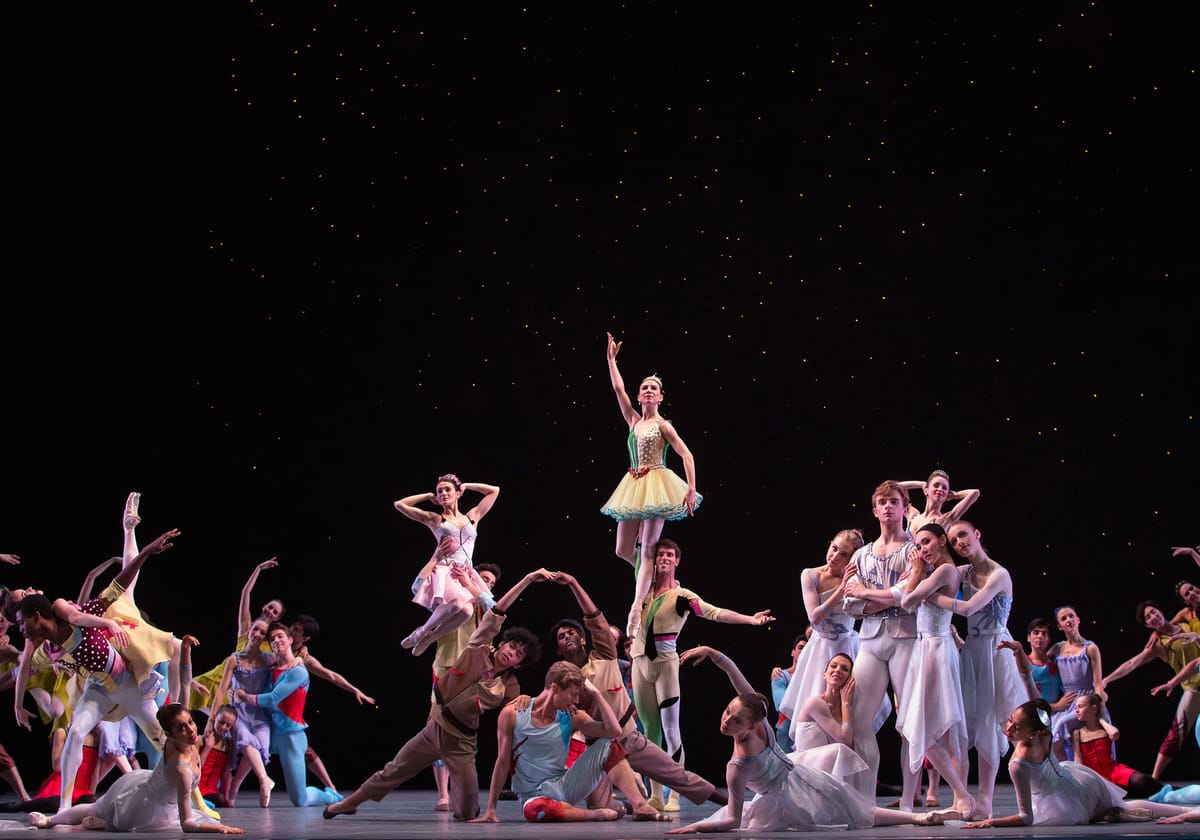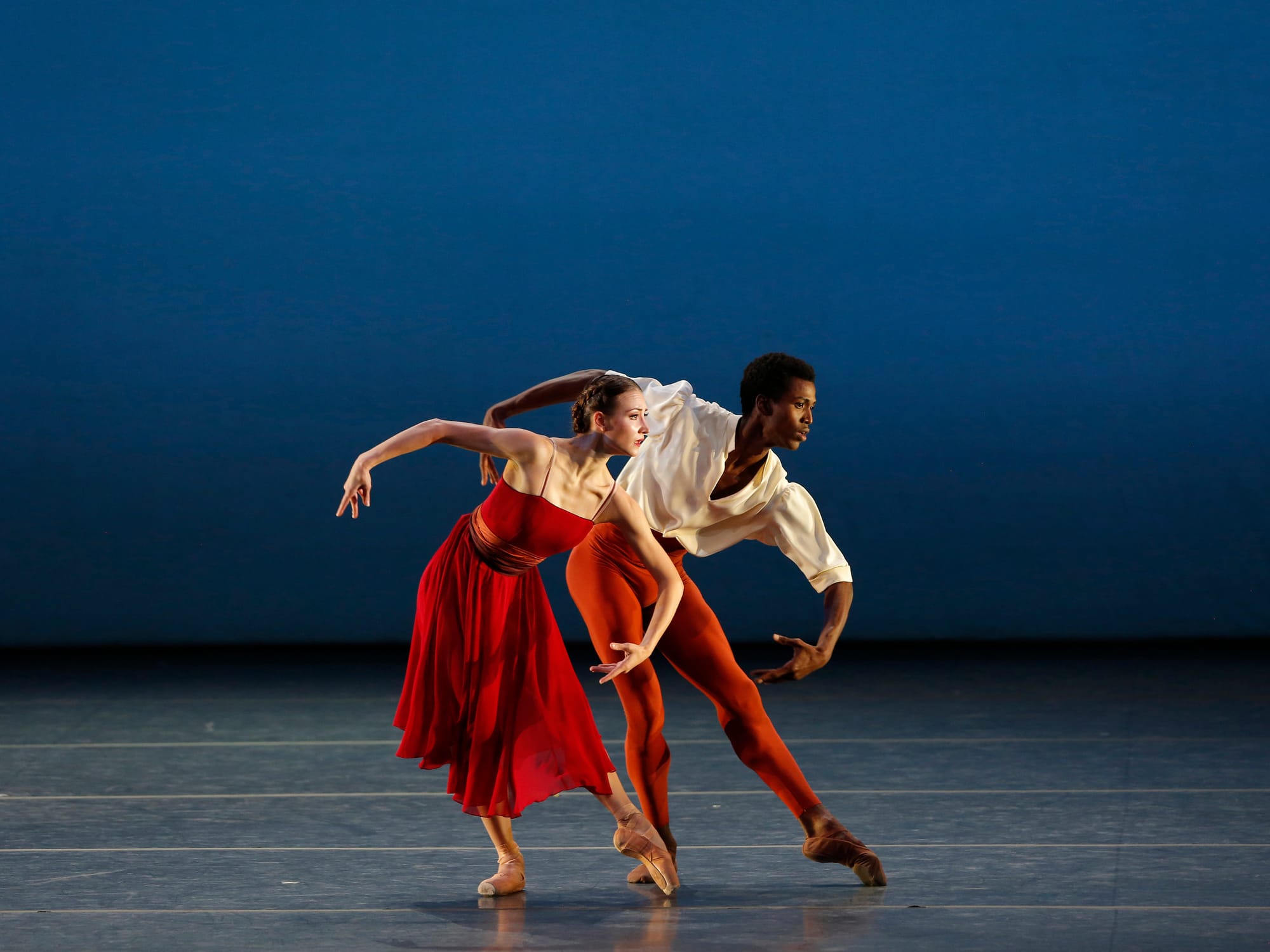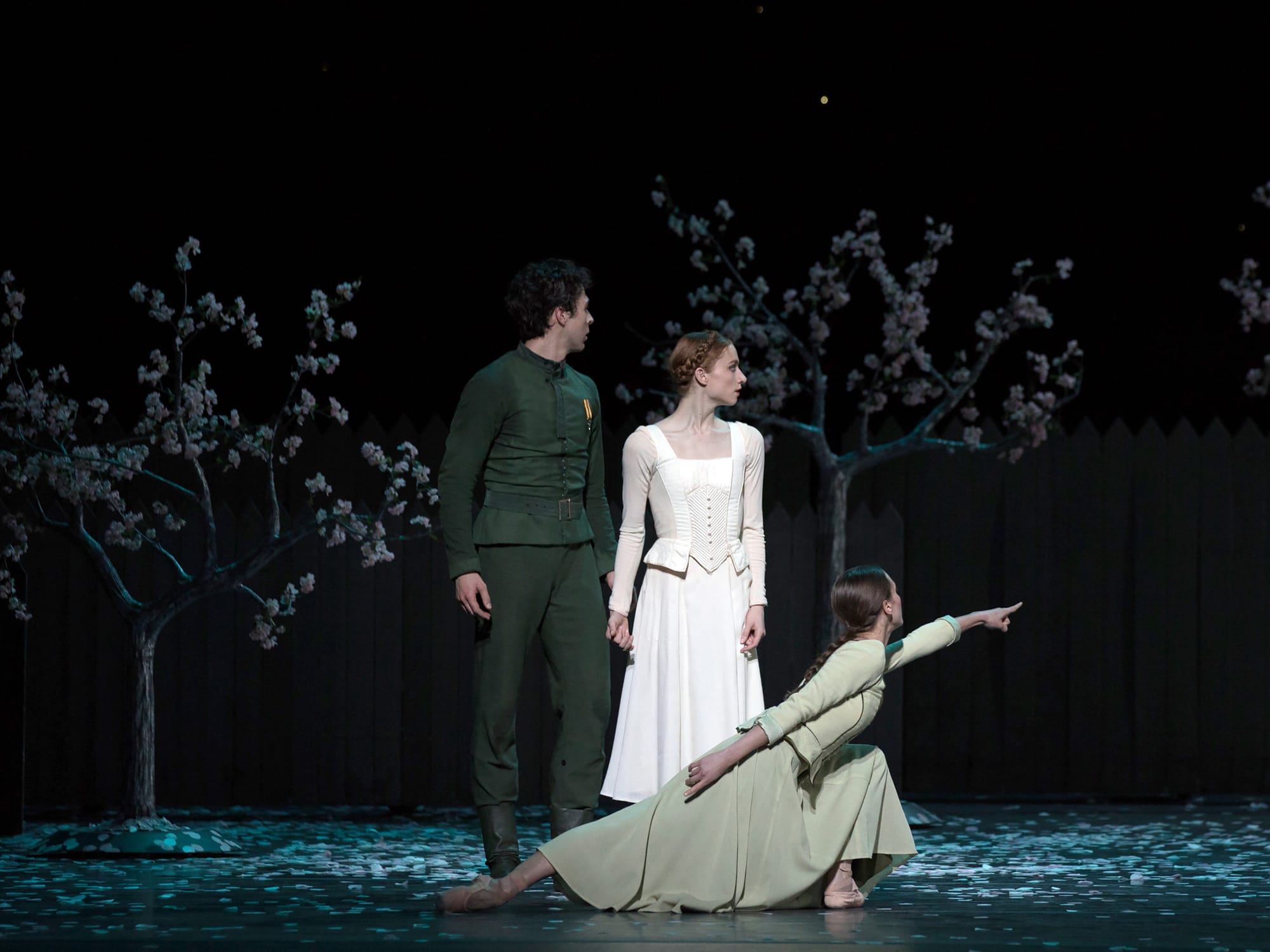Ratmansky Trio

“The Seasons,” “Songs of Bukovina,” “On the Dnieper,”
American Ballet Theater
New York Metropolitan Opera House
Lincoln Center
May 23, 2019
American Ballet Theater’s spring season at the Metropolitan Opera House is, in part, dedicated to the works of Alexei Ratmansky, who is celebrating his tenth anniversary as artist in residence with the company. Last week there was an all Ratmansky program that featured a premiere, “The Seasons,” set to Alexander Glazunov’s well-known score, as well as two of his earlier ballets. His full-length “Harlequinade” was seen earlier in May, another full-length work, “Whipped Cream,” is being presented this week, and his reconstruction of Marius Petipa’s “The Sleeping Beauty” will be shown in July.
Glazunov created the music for a one-act ballet by Petipa, which remained only a few years in the Maryinsky Theater repertory. Although the music subsequently became a staple of the classical music realm, it has not been popular with choreographers. For instance, when Jerome Robbins created his “Seasons,” he set the ballet to music of Verdi. This undoubtedly gave him more freedom, since the Glazunov composition comes with a built in series of dances, which would have been dictated by Petipa.
Ratmansky has closely followed the divertissement of solos, duets, and large group dances, as well as Petipa’s minimal narrative. Winter (Aran Bell) oversees the activities of a group of Snowflakes, as well as solos by Frost (Katherine Williams), Ice (Hee Seo), Hail (Catherine Hurlin) and Snow (Luciana Paris). Then two Gnomes (Lochlan Brooks and Elwince Magbitang) set a fire (here represented by pieces of red fabric) that melts all of winter away. Spring appears in the form of Zephyr (James Whiteside), who dances with the Rose (Sarah Lane) and the Swallow (Skylar Brandt). Summer features the Spirit of the Corn (Isabella Boylston), along with a Faun (Gabe Stone Shayer) accompanied by assorted Cornflowers, Water Men and Poppies, the latter being six little girls. Autumn is led by a Bacchante (Cassandra Trenary) and Bacchus (Blaine Hoven), also with a corps.
Ratmansky’s works tend to take several viewings to be fully understood, but this ballet, at first appearance, seems far more conventional than usual. The most striking features are the dances for the corps, which accompany many of the solos and duets. They are like shifting waves of motion in conversation with the activity of the central dancers, and are quite beautiful. But the individual dances, in a classical vocabulary that reflects the period of the original ballet, don’t register as particularly imaginative. To compare “The Seasons,” for example, with “Russian Seasons,” which Ratmansky created for New York City Ballet, is to be in a different world altogether. However, the sense that the ballet lacks strong dance imagery may in part be due to the dancers. Since it’s earliest days, ABT has been a company that imported guest stars to take most of its leading roles. Little attempt was made to develop stars within its own ranks. Now that has changed, which is a far more healthy state of affairs. But at this point, ABT still has few stars of its own. It has dancers who are very good, but with the exception of Herman Cornejo, David Hallberg and Gillian Murphy (none of whom were dancing on Thursday), no one has the authority of a major artist. Apparently ABT’s audience feels that lack, too, because there were many empty seats Thursday evening at the Met. It should be added that “The Seasons” also suffers from garish costumes by Robert Perdziola. Colors clash everywhere, giving the ballet an appearance of fragmentation and discord.

Also on the program was Ratmanksy’s interesting “Songs of Bukovina” (2017) to music by Leonid Desyatnikov, a Ukrainian composer with whom Ratmansky has often worked. Bukovina is a mountainous area that was once part of the Hapsburg Empire, then of Soviet Russia, and is now split between Ukraine and Romania. Although born in St. Petersburg, Ratmansky was raised in Ukraine, started his ballet training there, and danced in the Ukrainian National Ballet, so he knows the country well.
The ballet consists of twelve preludes taken from Desyatnikov’s twenty-four preludes inspired by Ukrainian folk songs. The dances occasionally hint at folk material in such things as unison shaking of heads and flexed feet, but more important are lyrical passages that give way to darker ones reflecting the dissonance of the score. Thus the dances, like the music, refer to both a nostalgia for an old, perhaps mythic, time of communal coherence and the unpleasantness of Ukraine’s more recent past. Christine Shevchenko (also from Ukraine) and Calvin Royal III, were the central couple, backed by another four couples.
Shevchenko, dressed in red, dances a first solo that is slow and lush, and which seems to speak of harmony and peace. The mood changes with Royal’s solo, in which he enters with vigorous jumps and lunges, only to become like a hunted animal, dashing from the scene. The couple’s first duet suggests two people on the run, their steps sharp and agitated. At times they crouch down and look about anxiously. A dance for a boy and three girls proceeds lyrically until suddenly the boy crumples to the floor, clasping his knees tightly, his head bowed as if in deep sadness. A second duet for the central couple has them spotlighted on a darkened stage, suggesting isolation. The ballet ends with Royal holding Shevchenko aloft in a recurring pose, in which both legs are bent in a broken arabesque. In a recent interview Ratmansky commented on his negative feelings about Russia’s history of domination in Ukraine, a feeling that is also expressed in Desyatnikov’s score, as well as Ratmansky’s choreography.

The other work on the program was “On the Dnieper,” which Ratmansky choreo- graphed for ABT in 2009. It was his first work for the company as artist in residence, making the program something of a retrospective. The score by Prokofiev was composed in 1930, and the ballet was first produced by Serge Lifar (still another Ukrainian) at the Paris Opera in 1932. Ratmansky has rechoreographed the ballet but retained the libretto, which is credited to Prokofiev and Lifar. The Dnieper begins in Russia but crosses the length of Ukraine before emptying into the Black Sea, so “On the Dnieper” is very much a Ukrainian tale.
The story centers on a soldier, Serge, returning to his home village where his fiancée, Natasha, awaits. Soon he realizes he is attracted to Olga, who is engaged to another man. Olga, too, is attracted to the homecoming soldier. Serge disrupts Olga’s engagement party, fighting with her fiancé. The two lovers escape the village with the help of Natasha, who sacrifices her own happiness to aid them. The lovers move on to a happy future, leaving Natasha heartbroken. Ratmansky created the four major roles for Marcelo Gomes, Veronica Part, Paloma Herrera, and David Hallberg. The ballet needs artists of this stature to make a real impact. Thomas Forster, Devon Teuscher, Catherine Hurlin and Alexandre Hammoudi could not quite give it the force it needed. Or perhaps the Met is simply too big a house for such an intimate work. Whatever the reason, the ballet’s most remarkable element was Simon Pastukh’s set of fences and flowering cherry trees (accompanied by whirlwinds of scattered blossoms), which were moved about the stage with each scene, the whole dominated by a gigantic moon.
copyright © 2019 by Gay Morris



